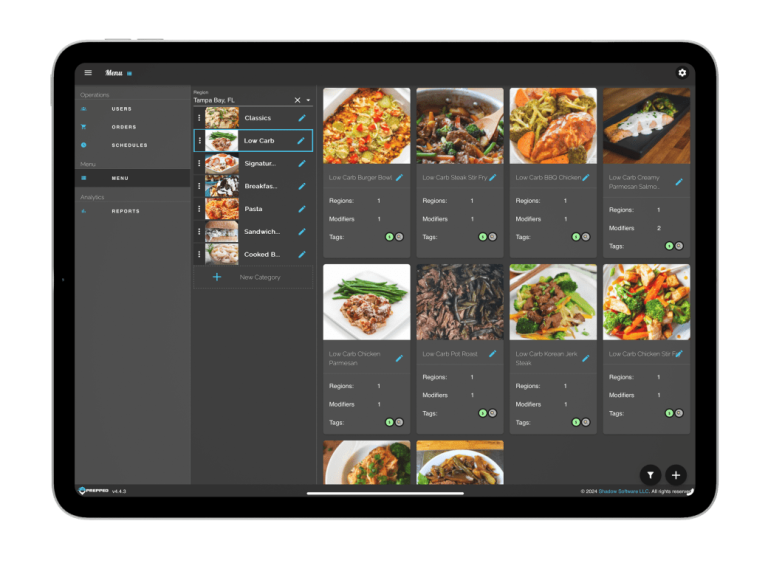Enhancing Nutrition and Efficiency in Assisted Living Facilities with Advanced meal planning software
Assisted living facilities hold a crucial role in providing care and comfort to the elderly and individuals needing support with daily activities. One of the core components of this care involves nutritional planning and meal management. Therefore, the integration of specialized Assisted Living Meal Planning Software is becoming increasingly essential. This technology not only ensures the dietary needs of residents are met but also enhances operational efficiency and satisfaction among residents.
The Imperative of Nutritional Management in Assisted Living
Nutrition is a fundamental part of an individual’s health, especially for seniors. Assisted Living Facilities and Care Services must prioritize efficient and accurate meal planning to cater to the various dietary requirements and preferences of their residents. The challenge, however, lies in managing these requirements at scale while maintaining personalization and quality.
Meal planning software designed for dietitians and kitchen staff in Assisted Living Residences and Nursing Homes is not just a technological upgrade—it is a transformative tool that streamlines the complex process of food planning. This ensures that meals are not only nutritious and tailored to each resident’s health needs but also appealing and enjoyable.
Introducing Prepped Culinary Software: A Tailored Solution
For facility managers and owners, choosing the right meal planning software can significantly affect their operational workflow. Prepped Culinary Software stands out in the market with its comprehensive features tailored specifically for assisted living environments. Here’s how this robust tool can solve the common challenges faced by the caregivers and staff:
- Customizable Meal Plans: The software provides diverse functionalities that enable staff to create individualized meal plans that cater to the specific dietary restrictions and preferences of each resident.
- Inventory Management: By integrating meal planning with inventory levels, the software helps in ensuring the availability of necessary ingredients, thereby minimizing waste and reducing costs.
- Regulatory Compliance: It ensures that all meals meet the nutritional standards and regulations required in Life Care Facilities and nursing homes, providing peace of mind for both staff and residents’ families.
Operational Benefits of Meal Planning Software in Assisted Living Facilities
Adopting advanced meal planner software within an assisted living or a nursing home environment translates into numerous operational advantages:
Efficiency and Time-Saving
Kitchen staff and dietitians can save a considerable amount of time planning and preparing meals. This efficiency allows them more time to focus on engaging with residents and addressing their immediate needs and preferences.
Cost Reduction and Waste Minimization
The precise planning features of meal prep software help in accurate ingredient purchasing. This careful management substantially cuts down on waste and unnecessary expenses, directing funds towards other crucial areas like resident care and facility maintenance.
Increased Resident Satisfaction
When meals are consistently enjoyable and cater specifically to the tastes and health needs of residents, overall satisfaction increases. This boosts the reputation of the facility and can be a key factor in a family’s decision when choosing an Assisted Living Residence.
Implementing Meal Planning Software: Considerations and Best Practices
For effective implementation of Assisted Living Meal Planning Software, facility managers should consider several key factors:
- User Training: Ensuring that all users, from dietitians to kitchen staff, are adequately trained to use the software efficiently.
- Data Security: Choosing software that guarantees the security and confidentiality of resident data.
- Customization Flexibility: The software should offer customizable options to accommodate the specific needs and operational styles of the facility.
Furthermore, ongoing support and updates from the software provider are crucial to address any emerging needs or challenges that arise as the facility evolves.
Conclusion
The role of technology in managing and streamlining meal planning within Assisted Living Facilities cannot be overstated. With the right meal planning software, such as Prepped Culinary Software, facilities stand to gain not just in operational efficiency but also in nurturing a healthy, satisfied community of residents. Embracing technology in dietary management is indeed a critical step toward comprehensive resident care and service excellence in the realm of assisted living.
For owners and managers of such facilities, investing in advanced meal planning solutions is a strategic move that promises significant returns in resident care and operational management. Explore how Prepped Culinary Software can transform your meal planning approach and elevate your assisted living facility to new heights of efficiency and resident satisfaction.












